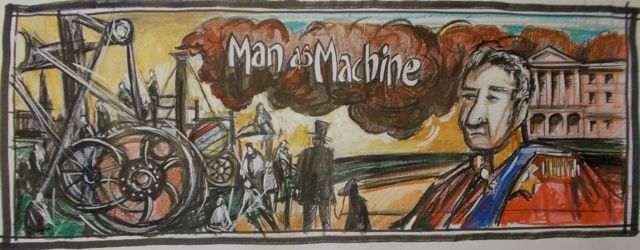Having caught his breath Tarquin O’Flaherty continues his discourse on the poor, the rich and the relationship between the two.
There had always been Poor Laws. This meant that people suffering hardship received some form of help from their local parish or council rates. The Speenhamland System, in the early stages of the Napoleonic Wars, was devised to alleviate extreme poverty caused by high food prices. At a meeting of magistrates in the town of Speenhamland in Berkshire, it was decided that people on low wages should have their money sufficiently topped up by the parish to ensure they they remained healthy enough to go on working. This system was immediately open to exploitation. Employers of all descriptions began to deliberately pay low wages in the sure and cynical knowledge that the parish would make up the difference. This system spread slowly throughout the country, existed in various forms, and was universally reviled as the guaranteed path to pauperism. Eventually it was replaced, in 1834, by the Poor Law Amendment Act.
Incidentally, following the Black Death in the 14th century, which caused vast labour shortages, governmental regulation of labourers and their wages brought workhouses into existence. With the scarcity of workers, labourers were not allowed to pursue higher wages in other parishes. The law, terrified that freedom of movement would cause wages to rise, insisted that labourers sought work only in an agreed area. If there was no work available locally, and the labourer was forbidden to look elsewhere, then it naturally followed that the parish must provide work. They did this by using an early form of the workhouse.
The Dissolution of the Monasteries in the 16th century, the greatest act of architectural vandalism in English history, gave local parishes another headache. Monasteries for centuries had kept hospices to care for the elderly, the sick and the poor. They had also provided work to labourers, cooks and gardeners. These people were now thrown ‘on the parish’, and the parish was now responsible for their health and wellbeing. Lots of them, for lack of alternative accommodation, wound up being housed in the workhouse, which meant that the workhouse very rapidly, besides rock-breaking, had to take on the responsibilities of a hospital.
In the 18th century, and in the way of bureaucrats, it was decided (in theory) that anyone seeking Poor Relief must enter the workhouse where work would be provided in exchange for board and lodgings. (In fact, outdoor relief continued.) There would be no pay. In response to this legislation, workhouses were built all over the UK and their managers encouraged to make conditions as difficult as possible for the inmates. Politicians were as paranoid then as they are now. In their mindless, demented way they became obsessed, fixated on the idea of ‘dole bludgers’, and believed that anybody who is unemployed, for whatever reason, and seeks Poor Relief, is not only a contemptible failure, but a low criminal as well.
In the great majority of cases, the workhouse was the last thing a man wanted. In times of economic slump, all a man needed was a little money to tide him over while he hunted for another job. The workhouse literally pauperised him. He worked all day, usually at rock breaking, earned no money at all, and so was in no position to go looking for work. By the middle of the 19th century, workhouses were being run like businesses, with the distinct advantage that the labour was free.
In the meantime, canals were being dug, railways built and the voteless lower orders were becoming increasingly pissed off.
TO BE CONTINUED.

